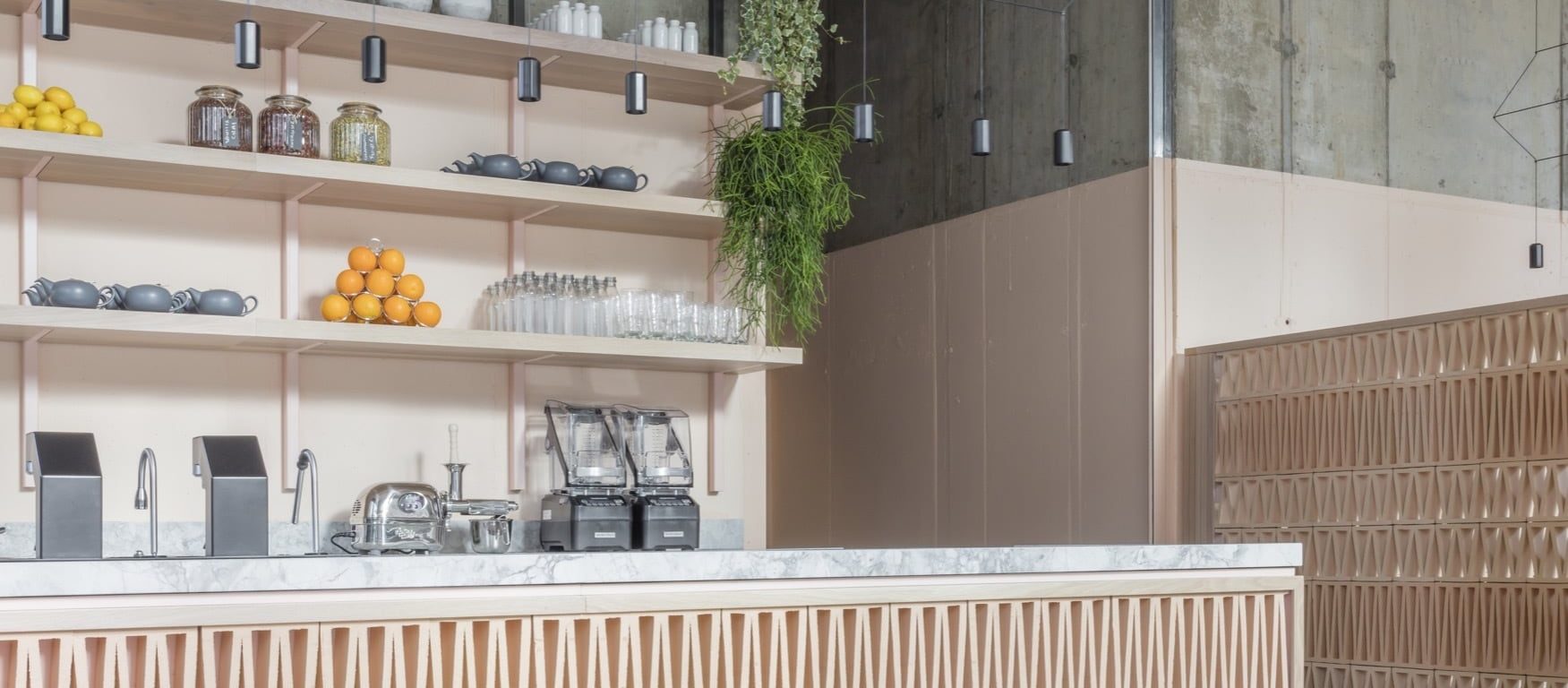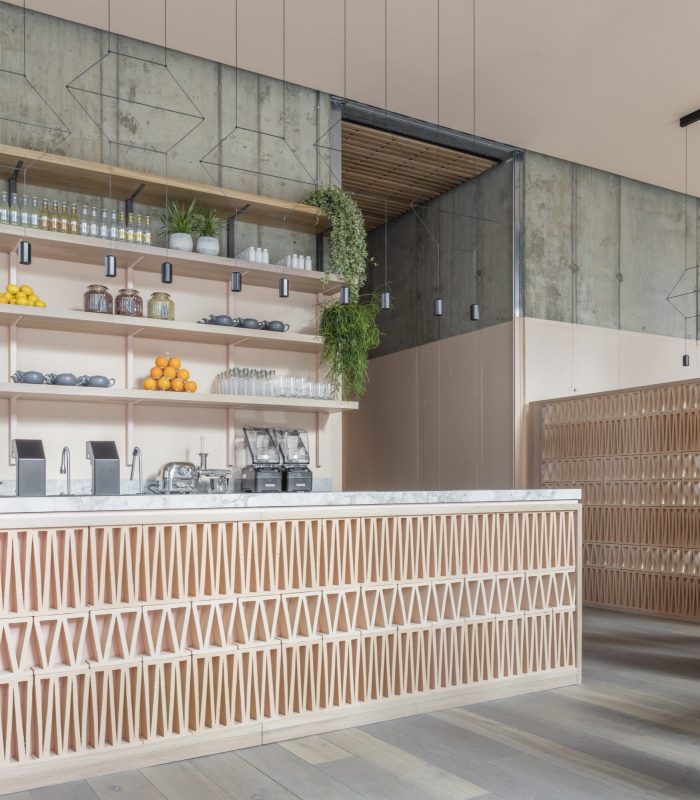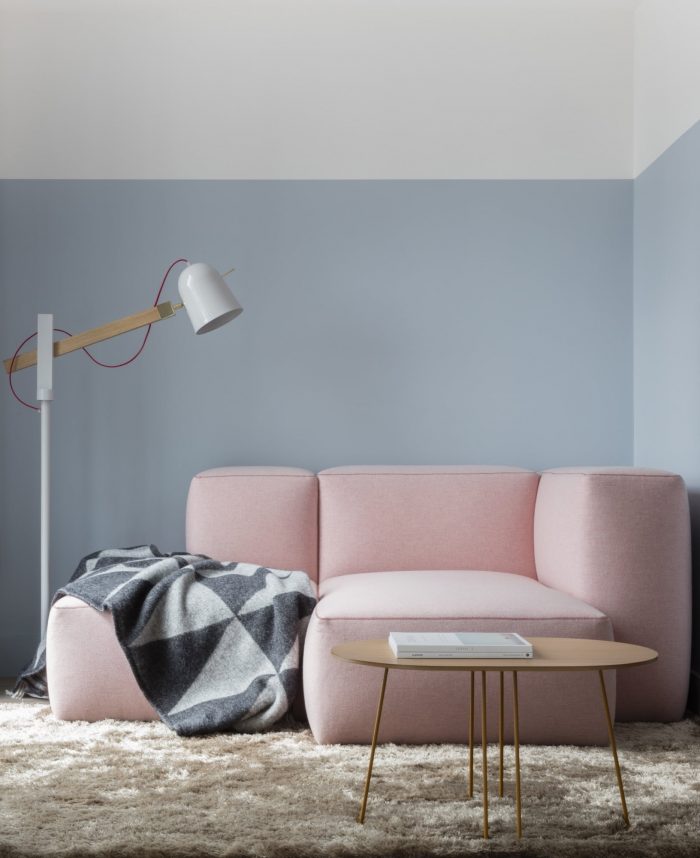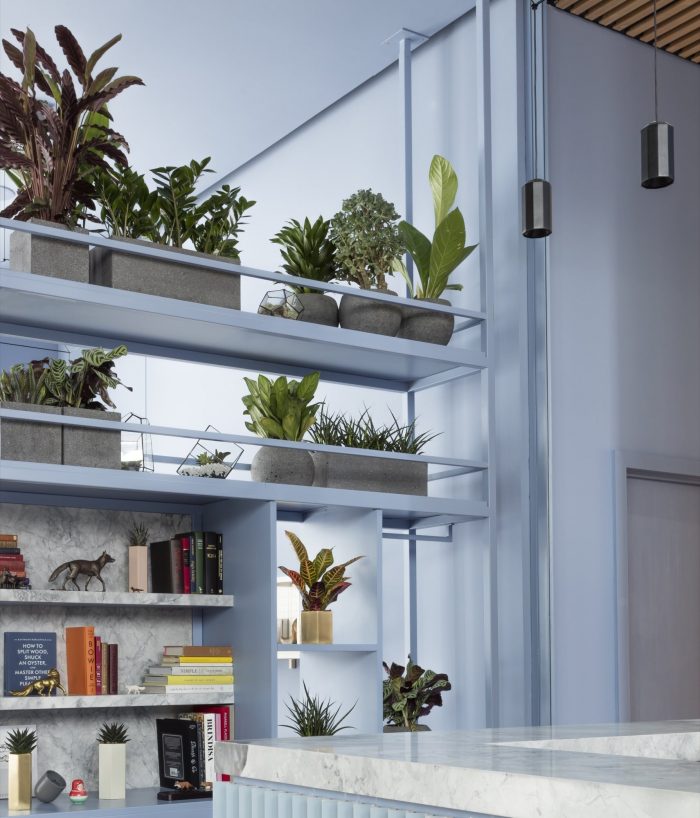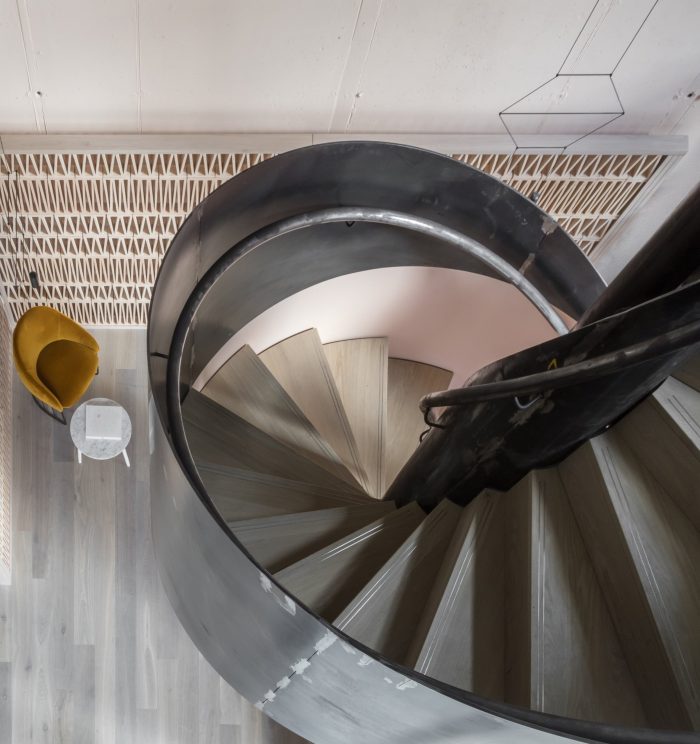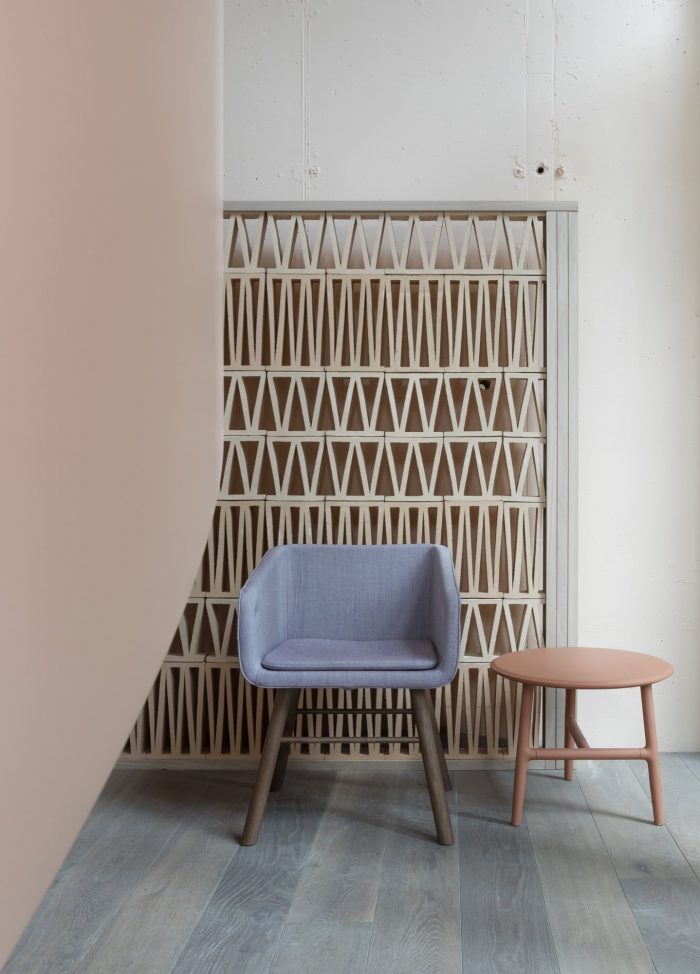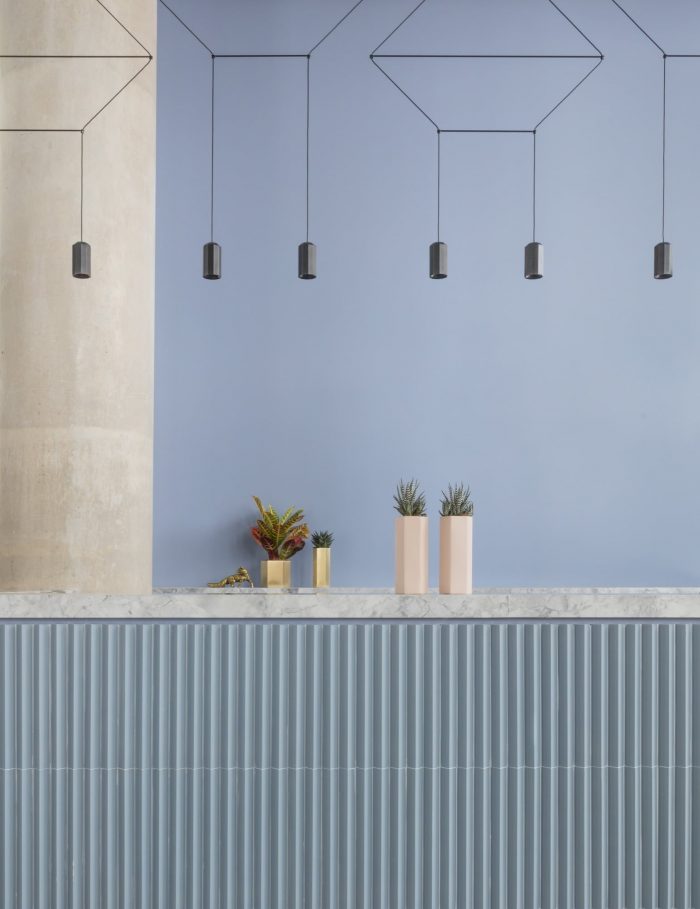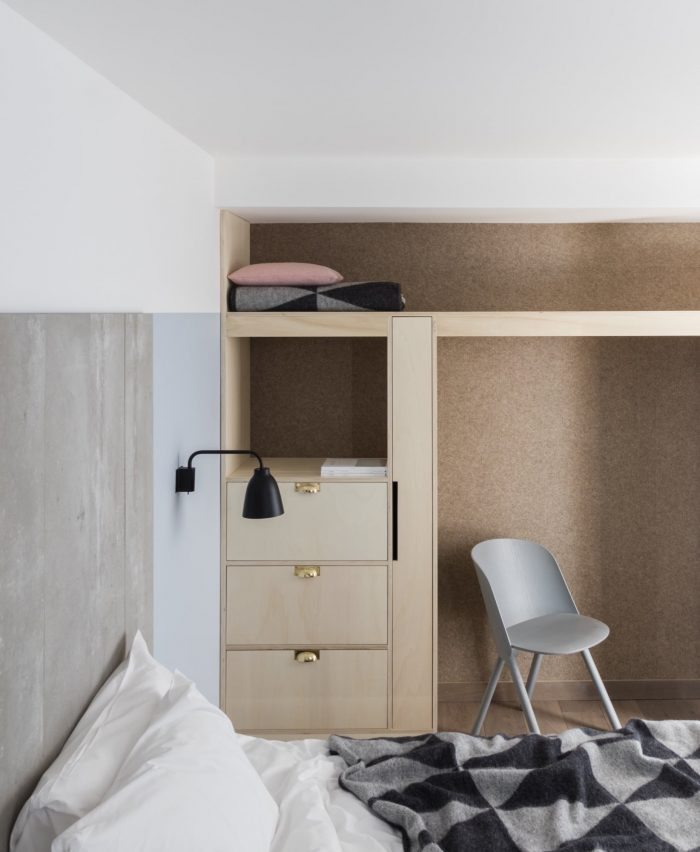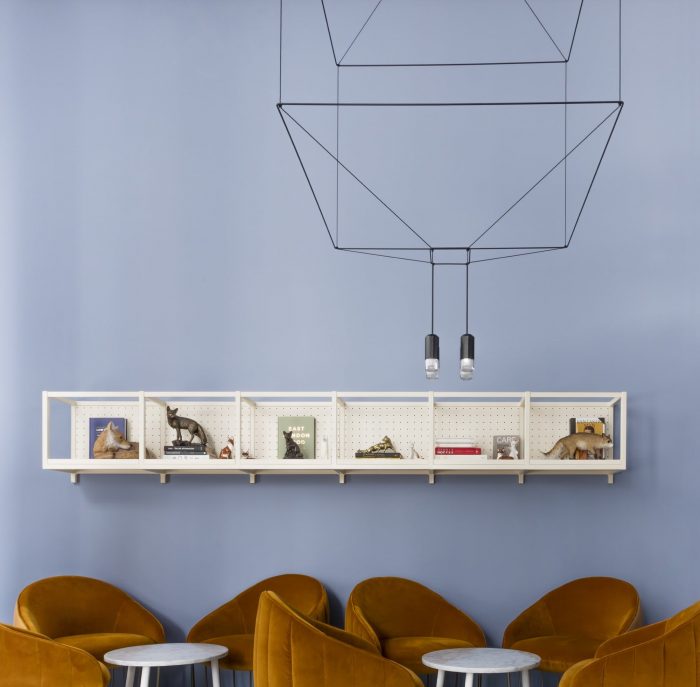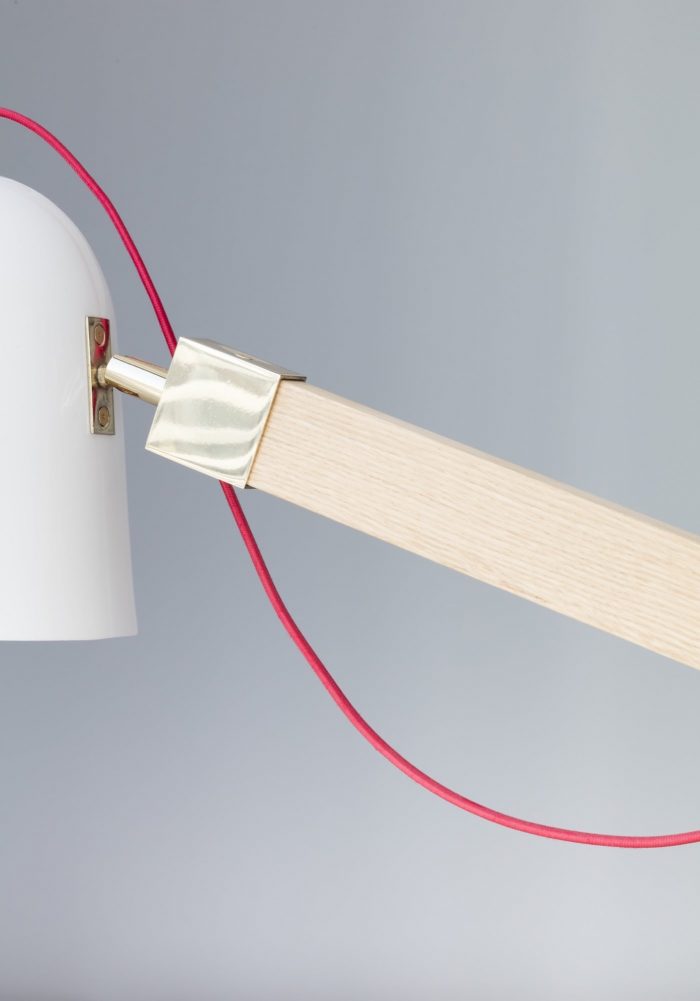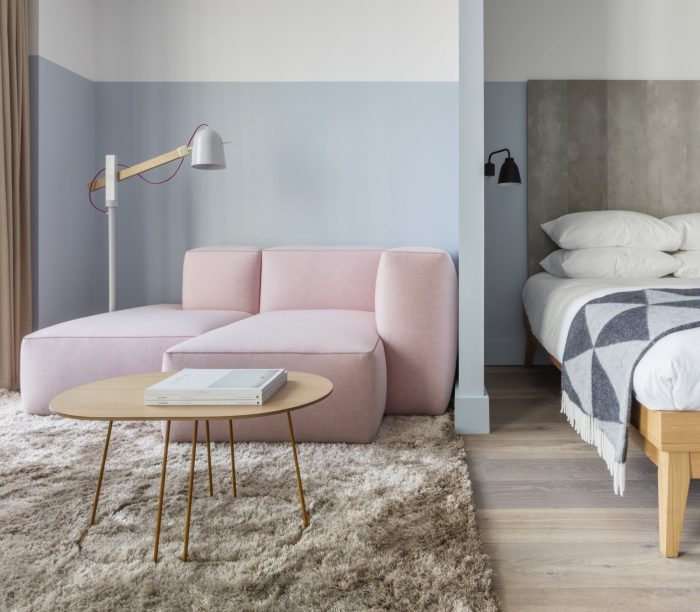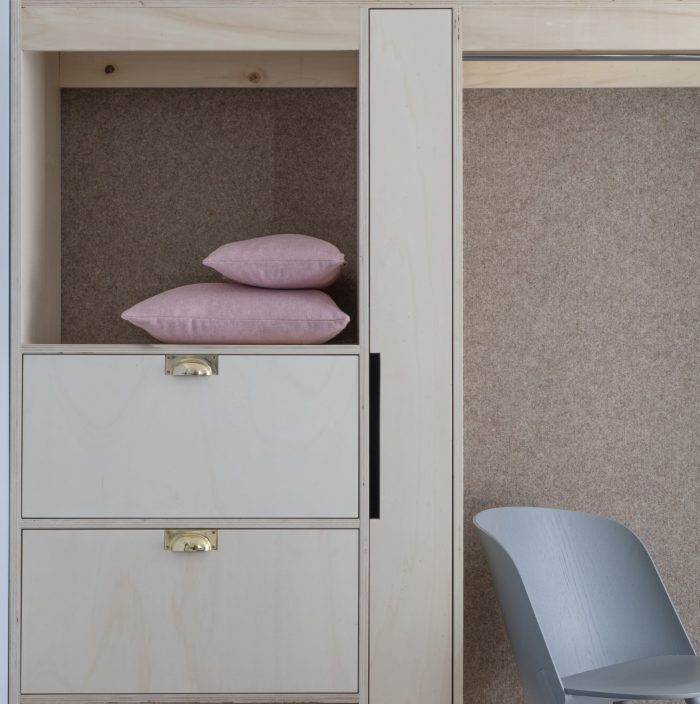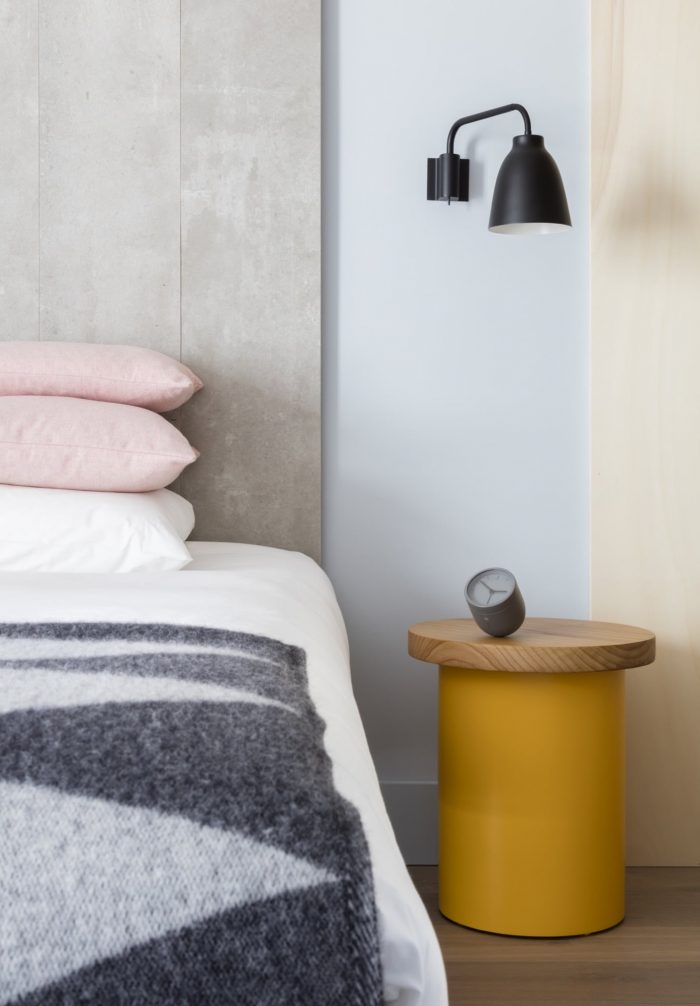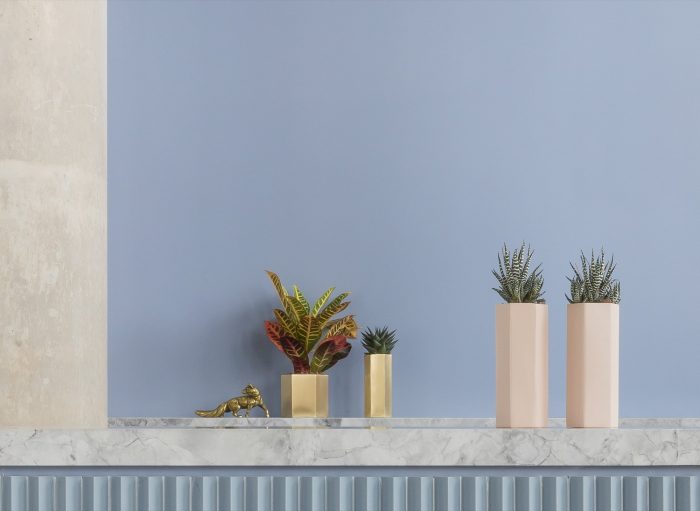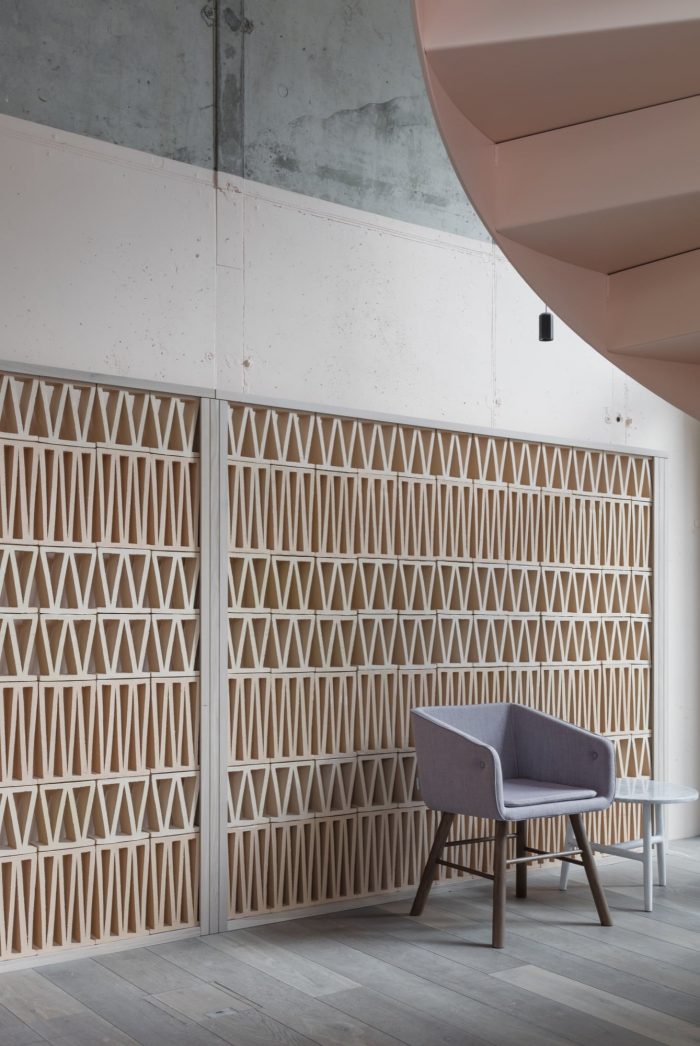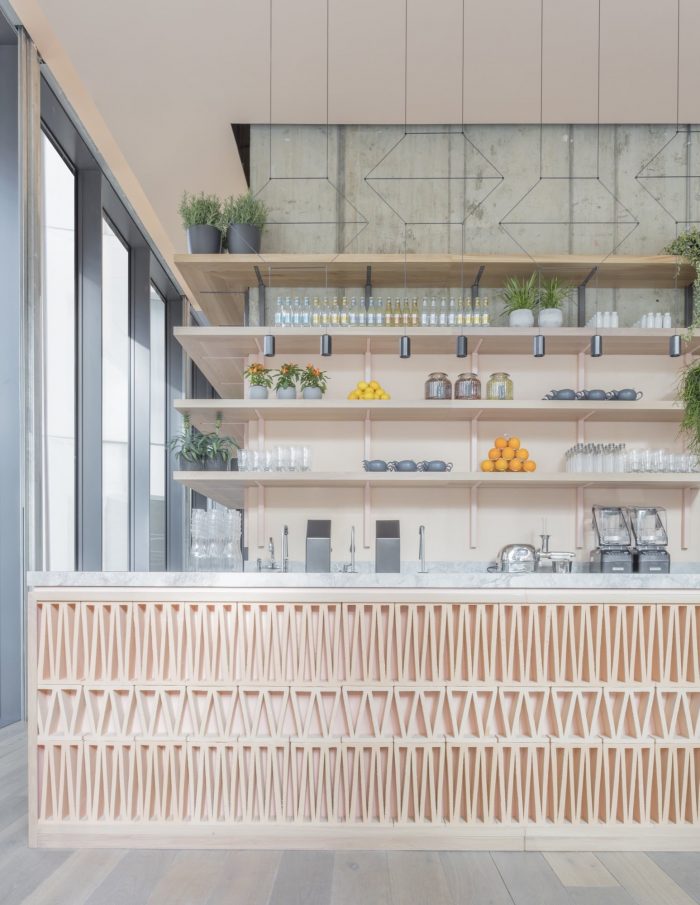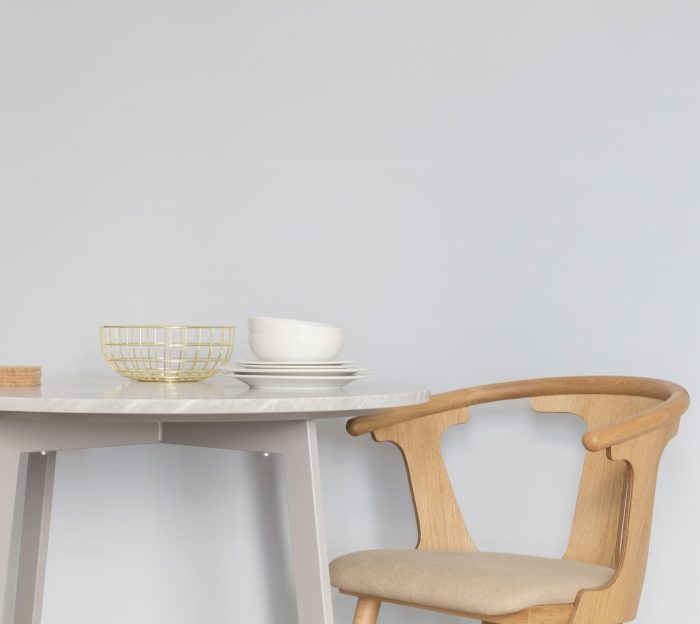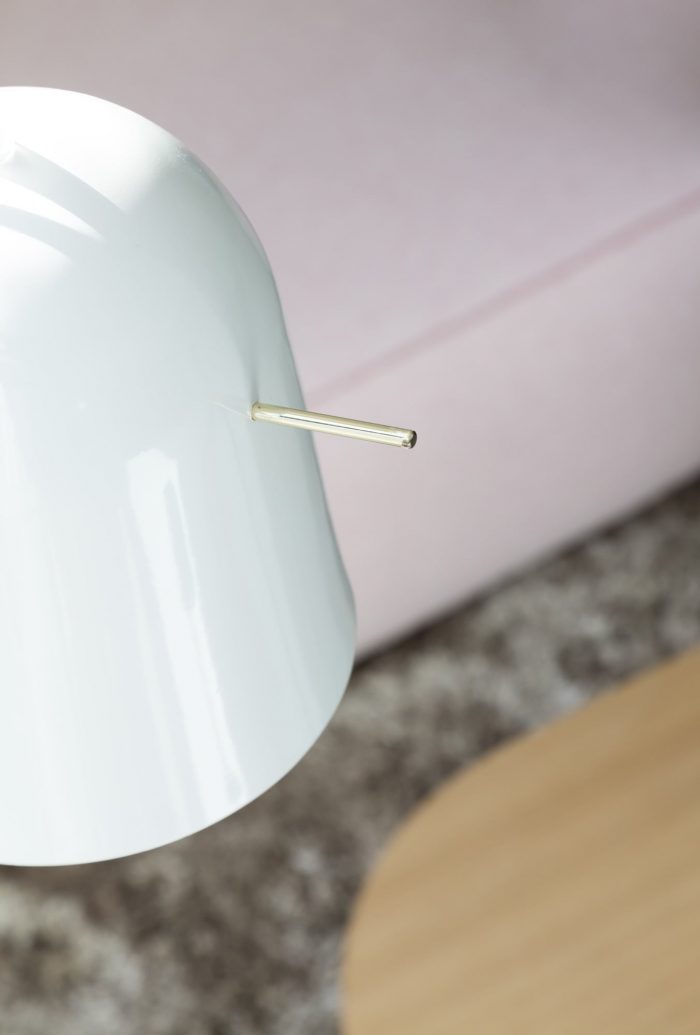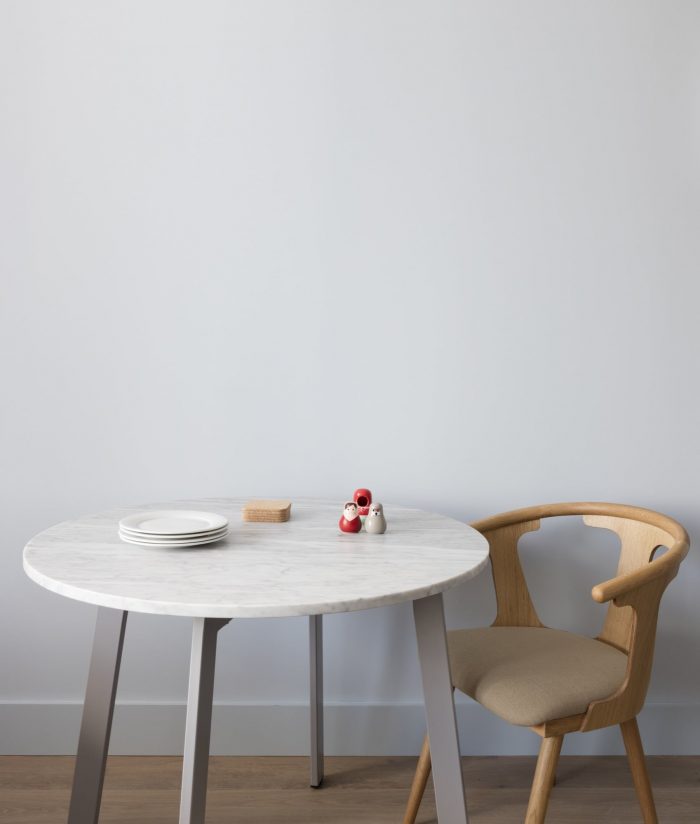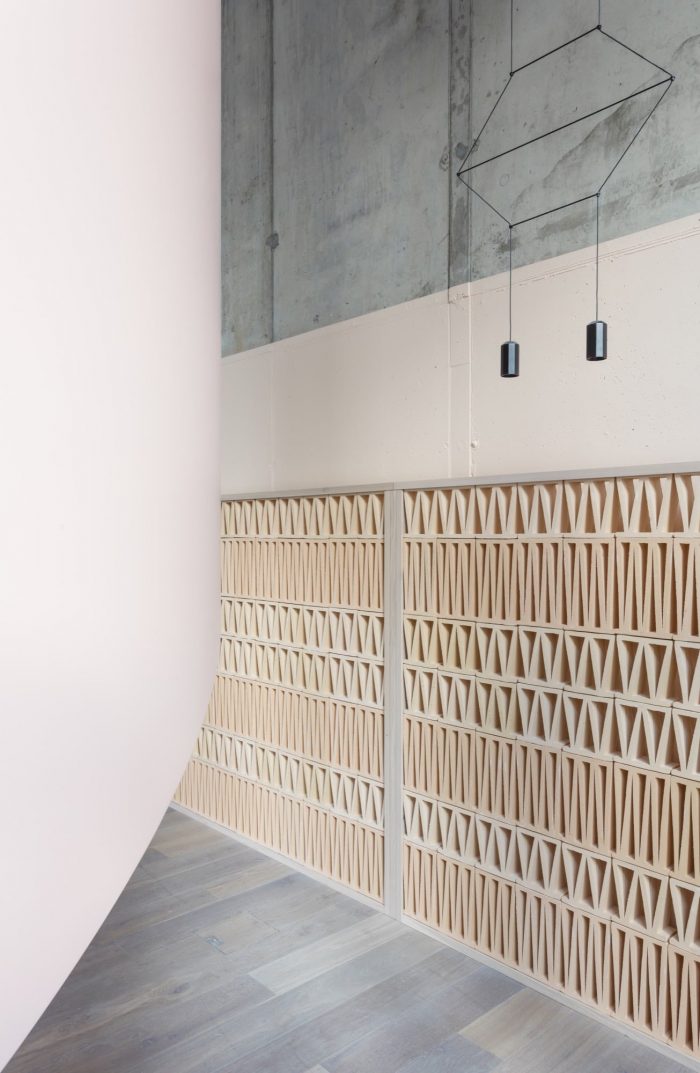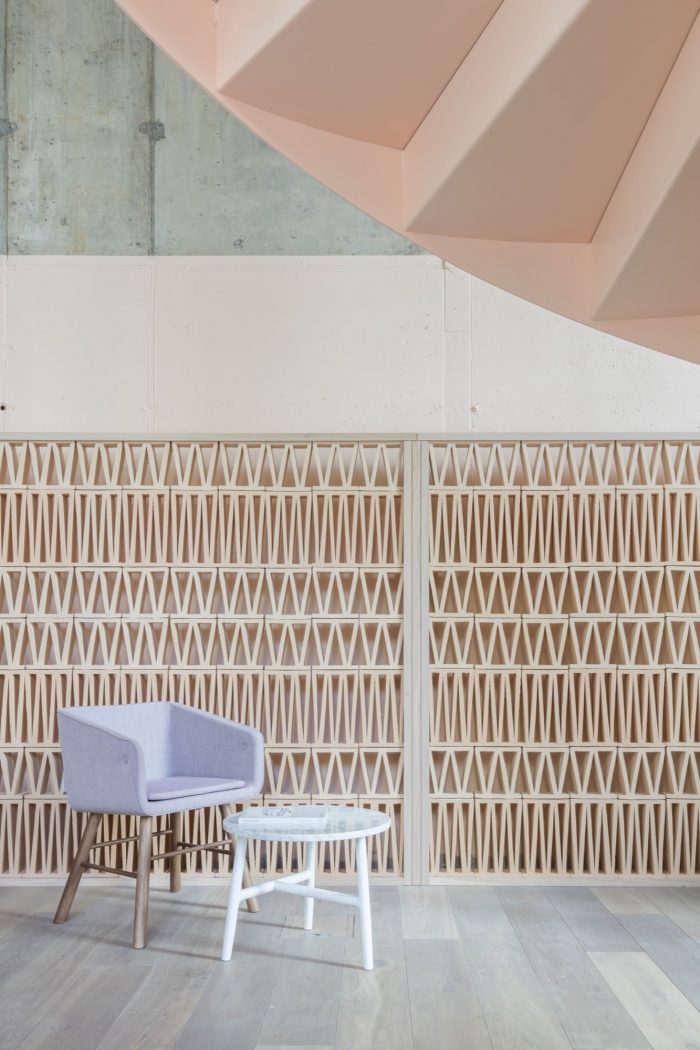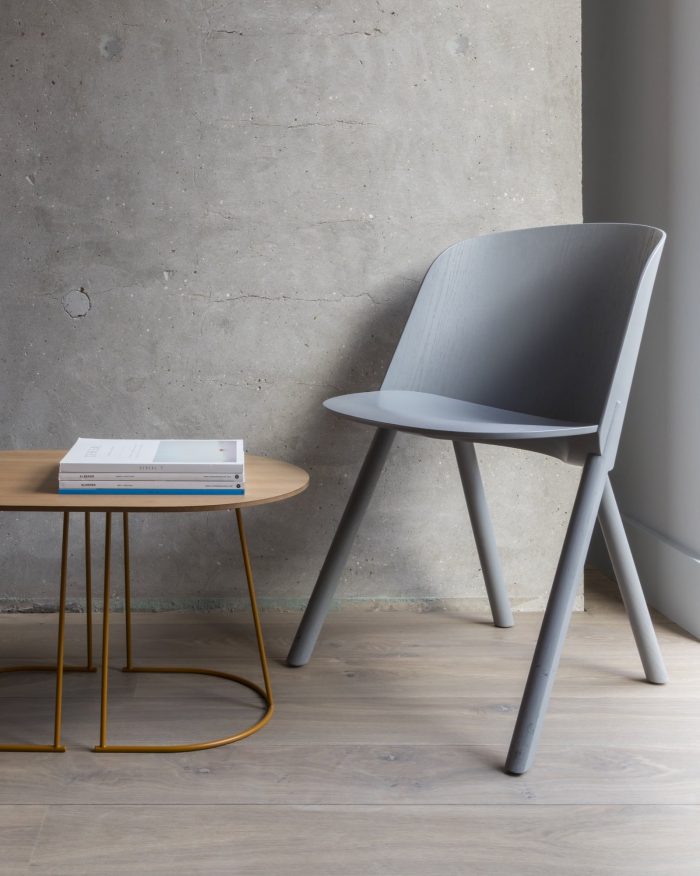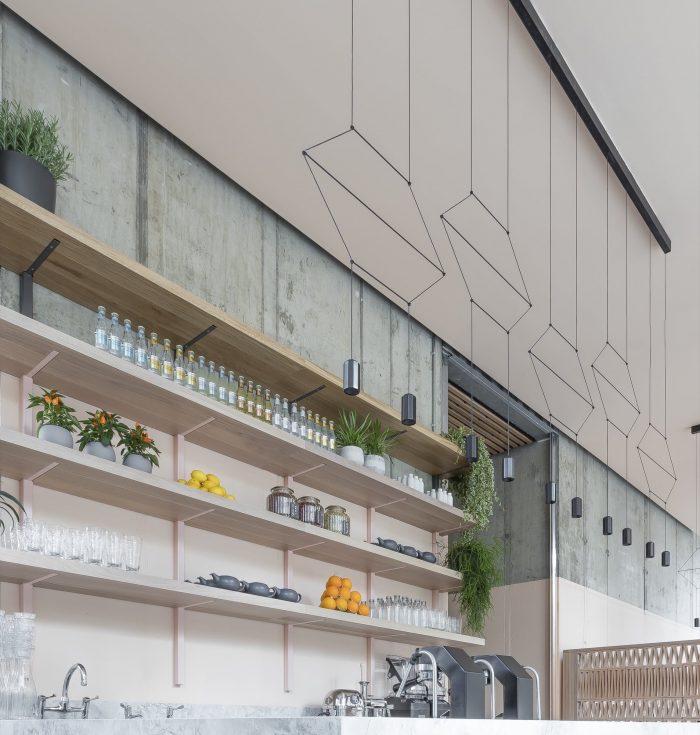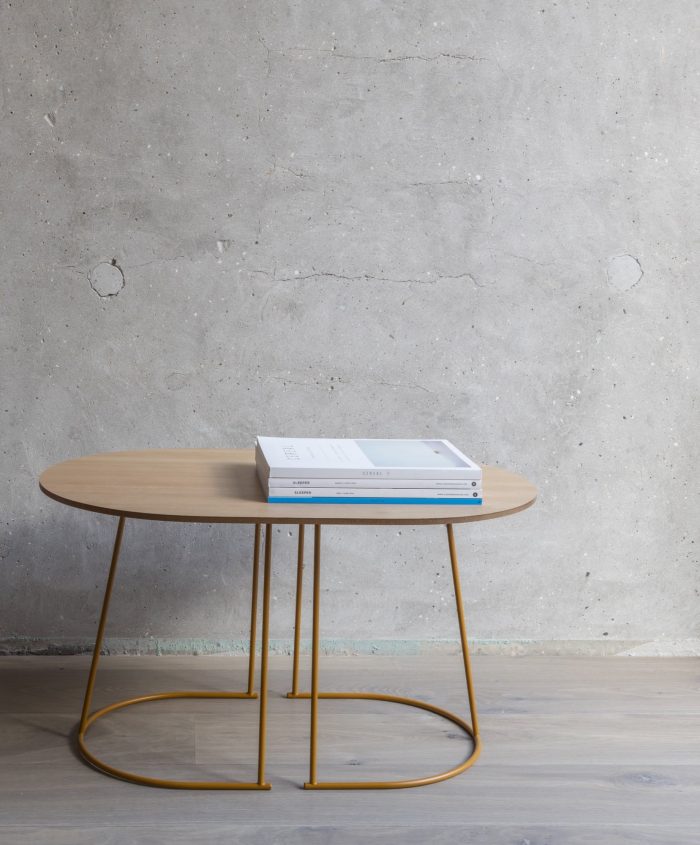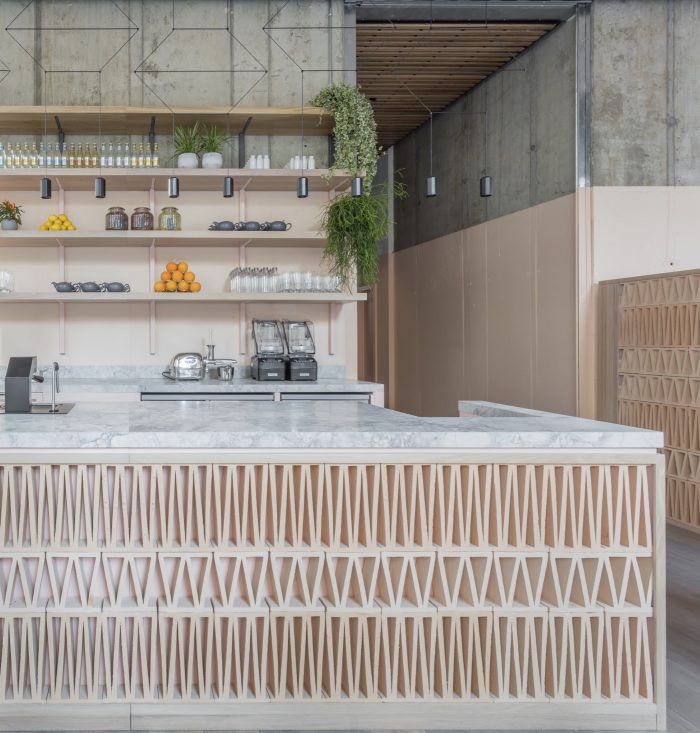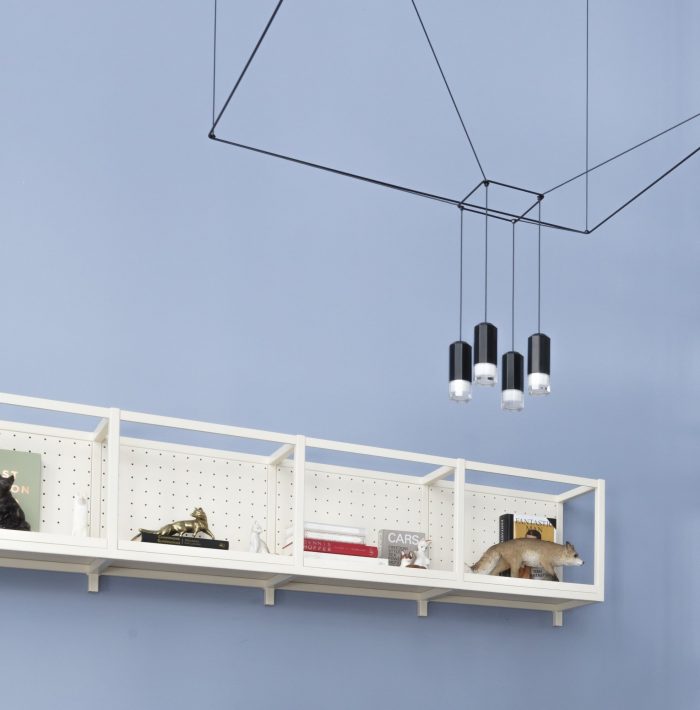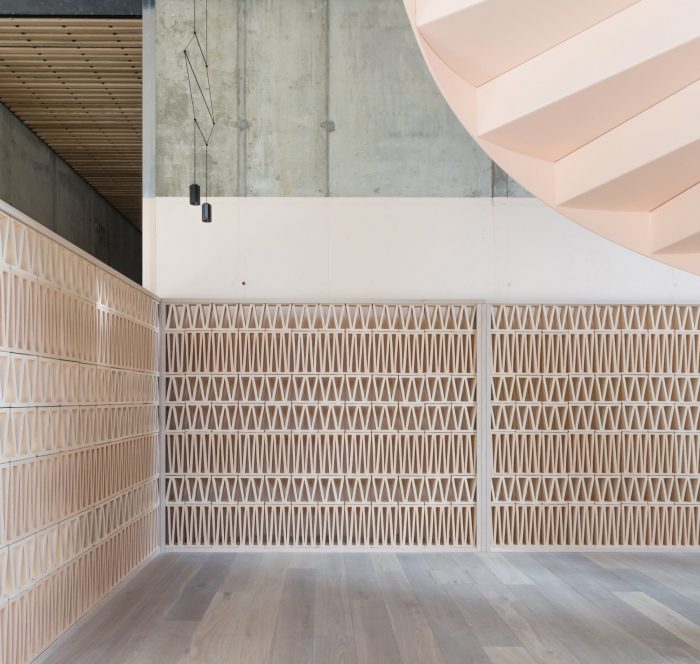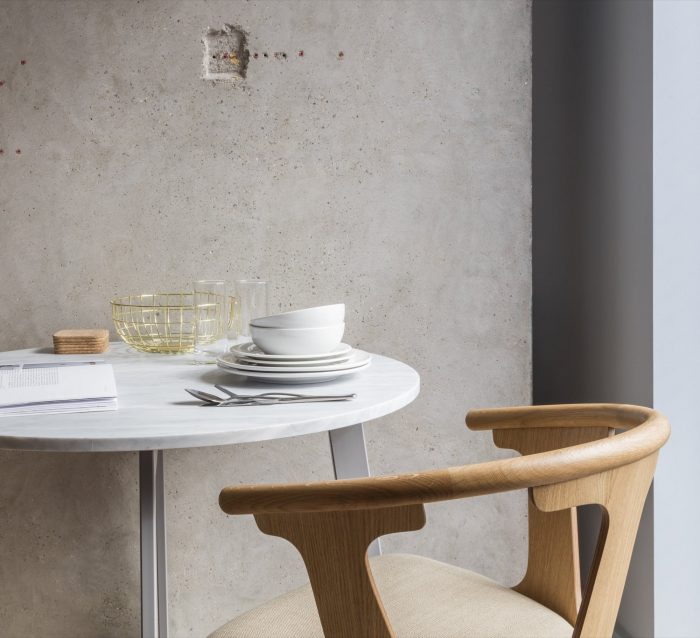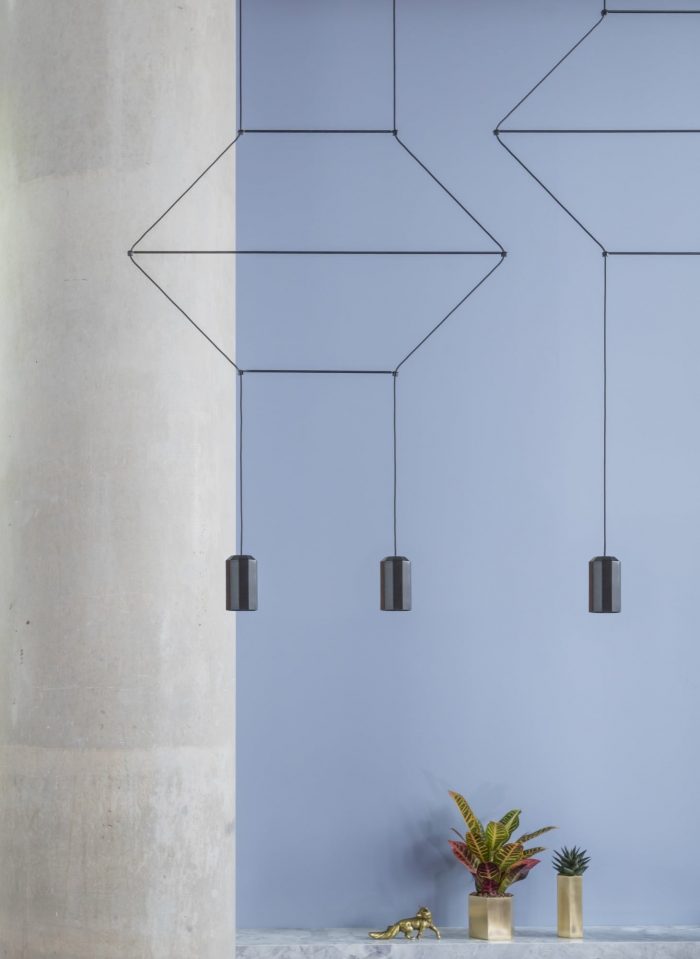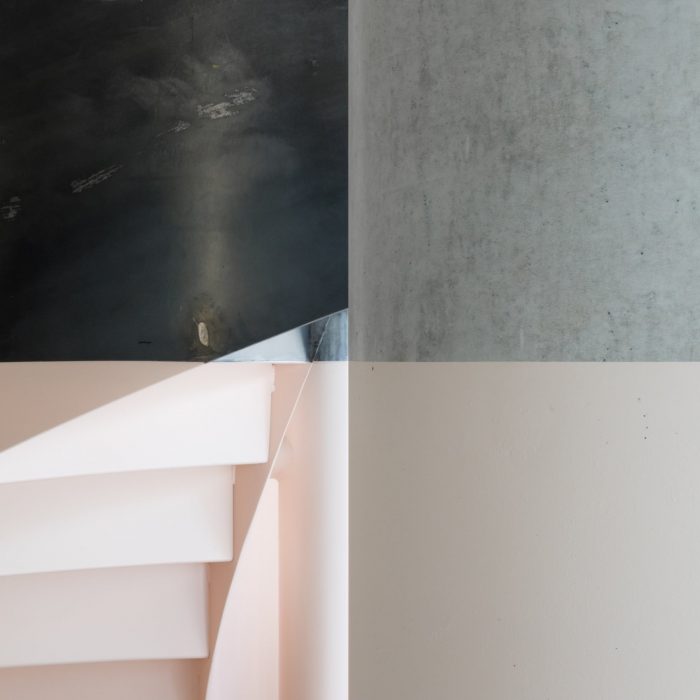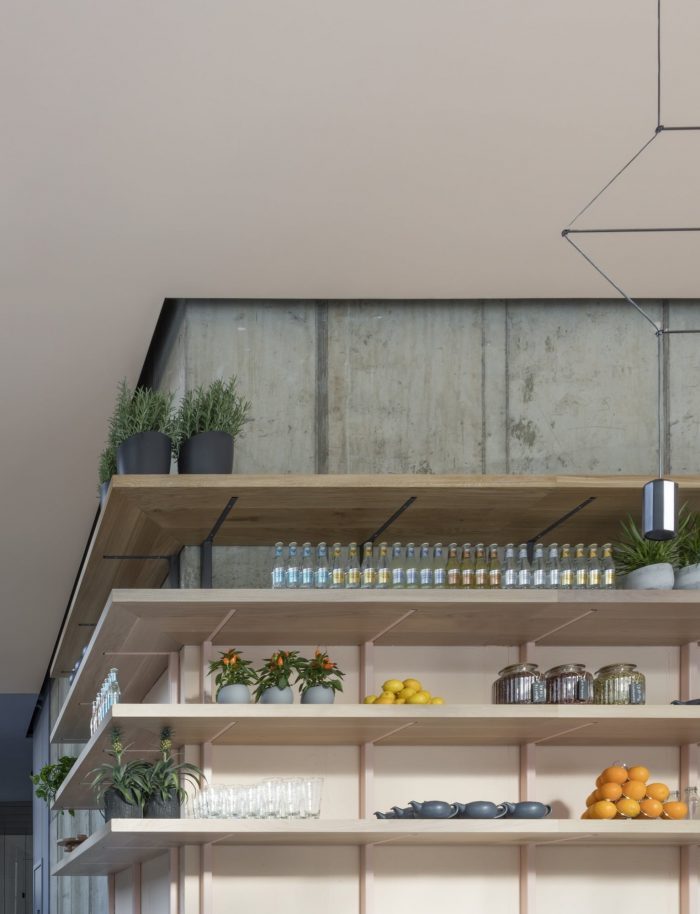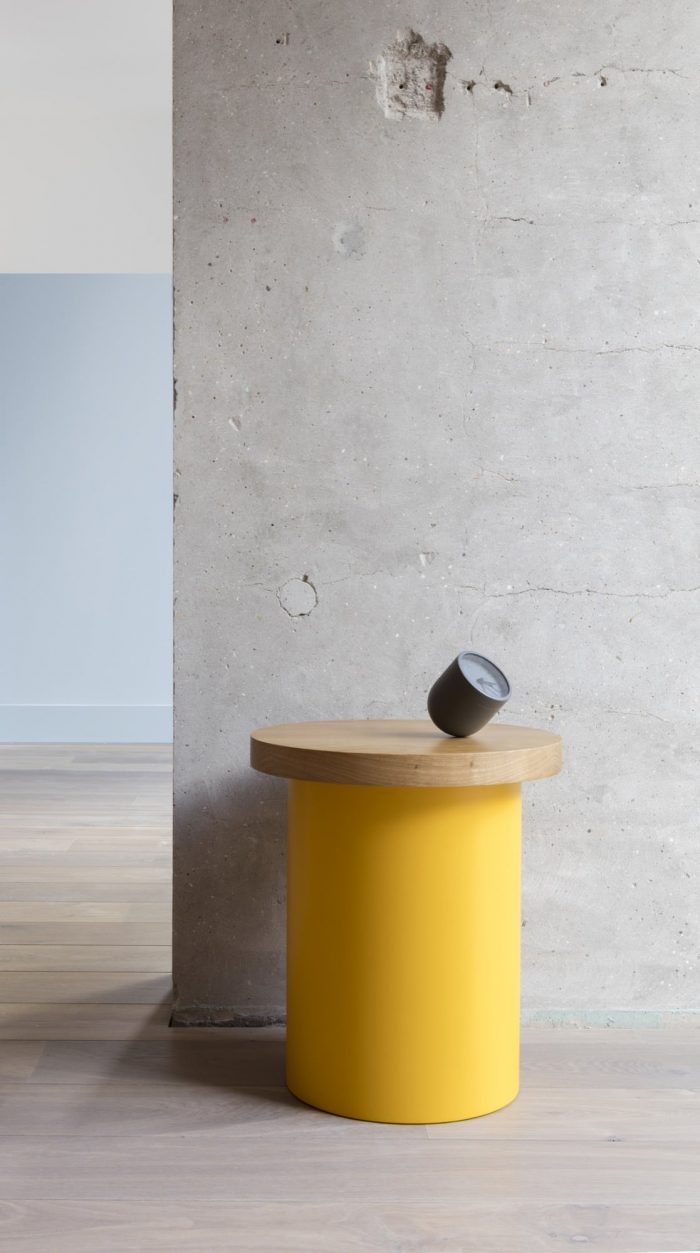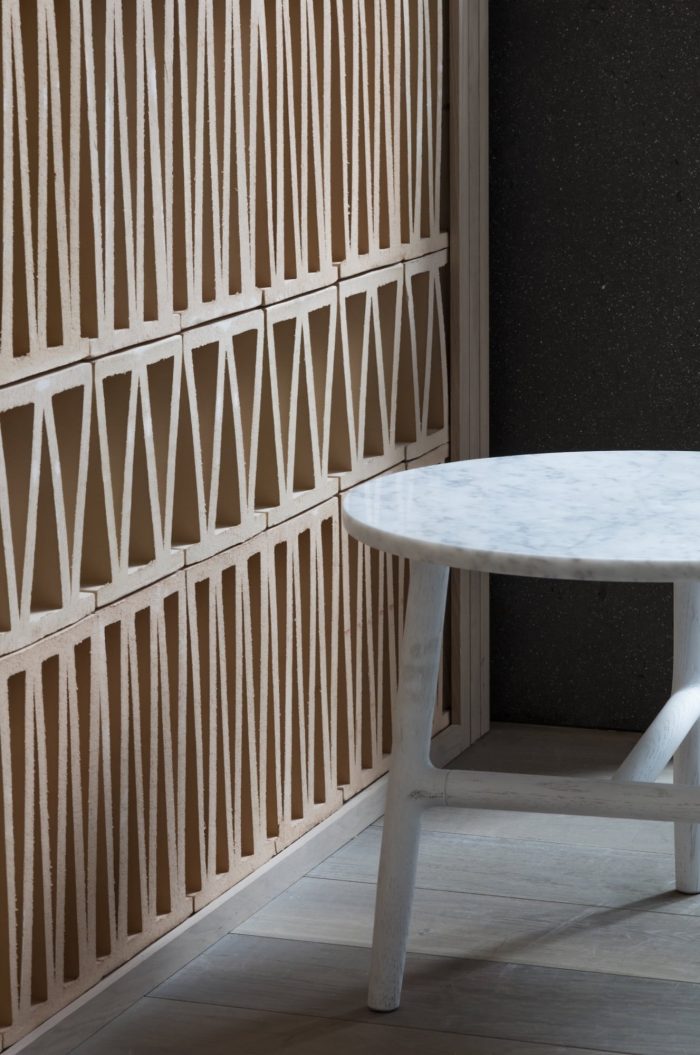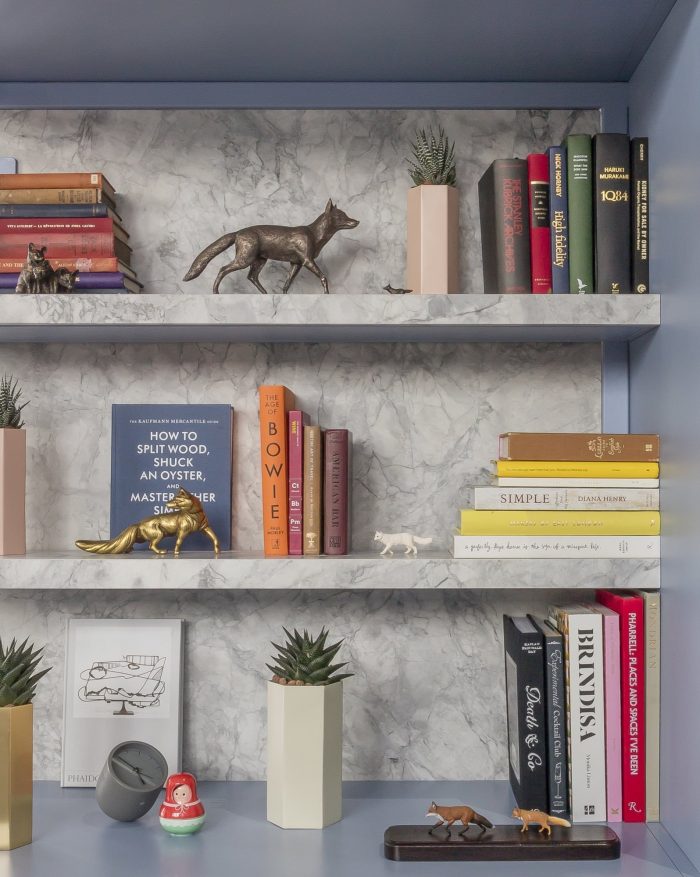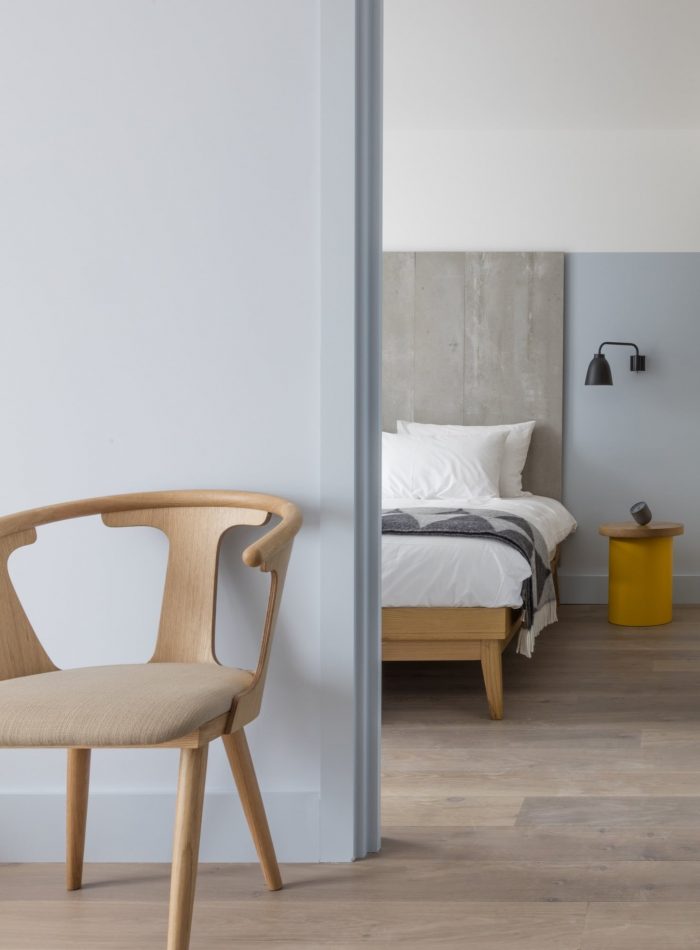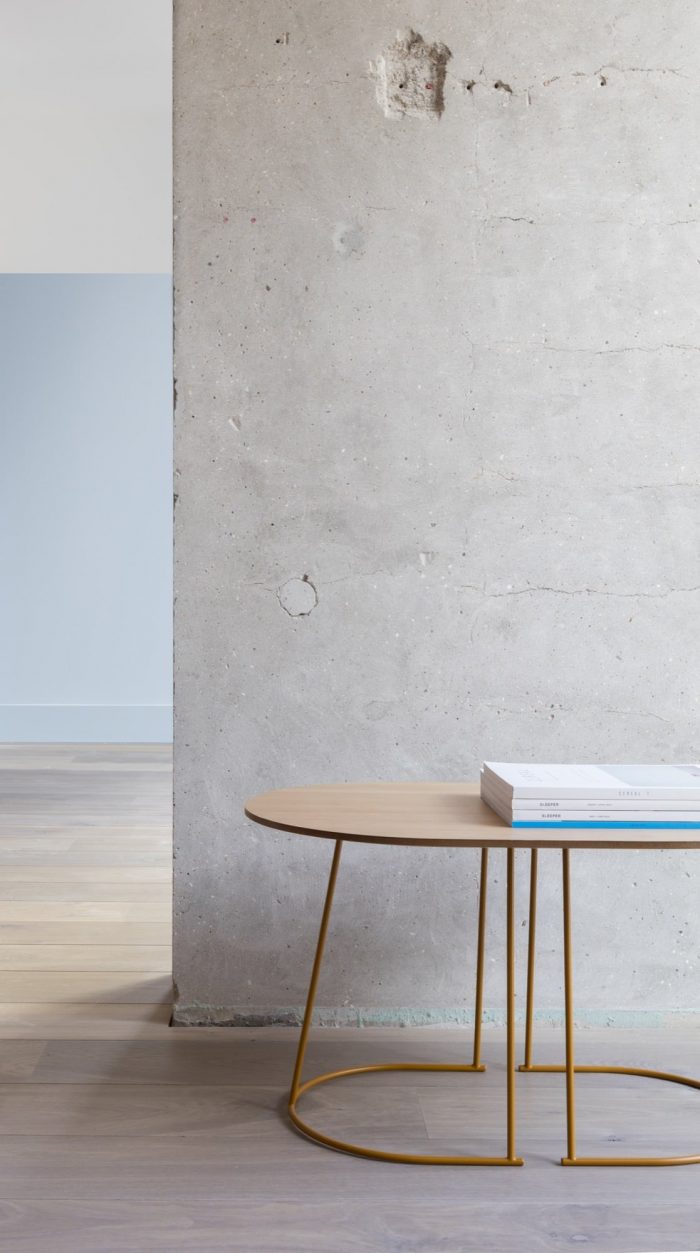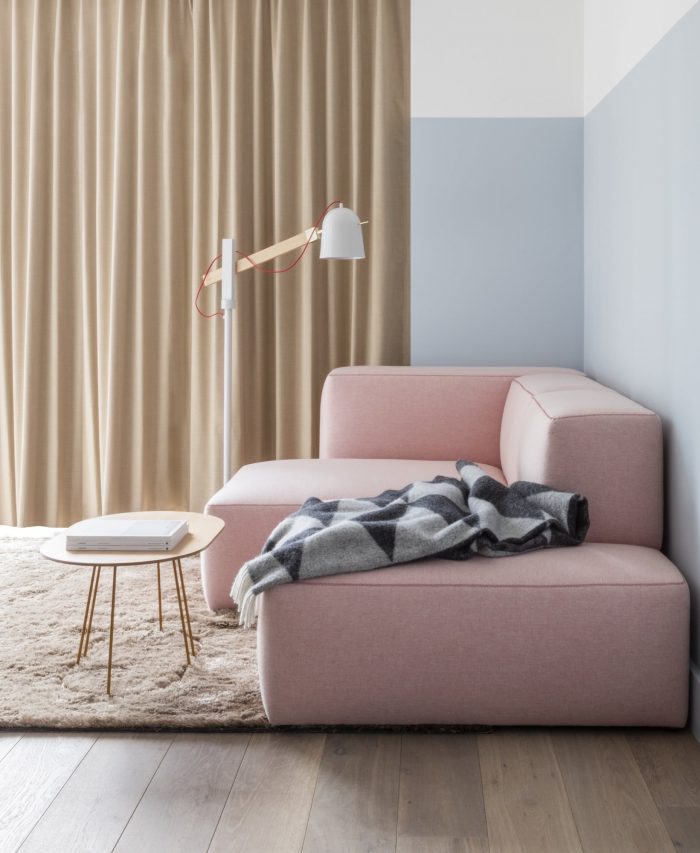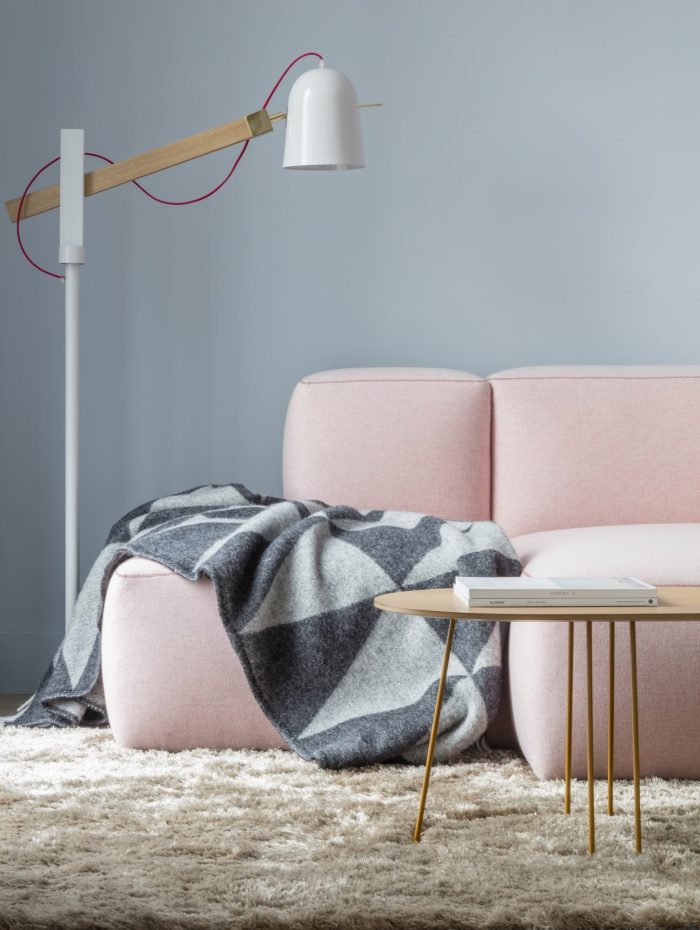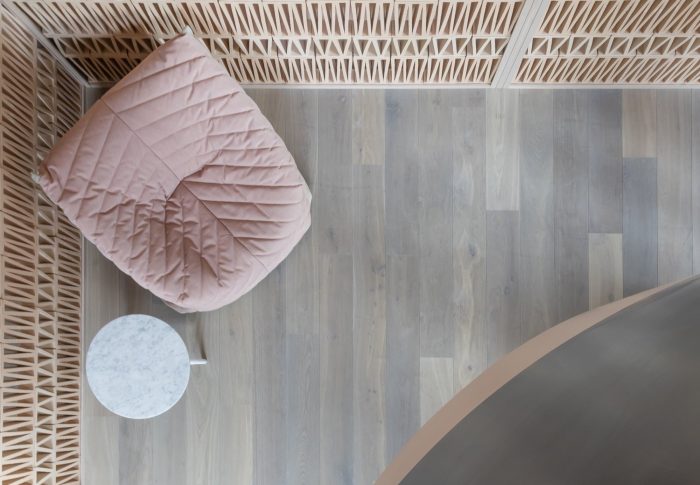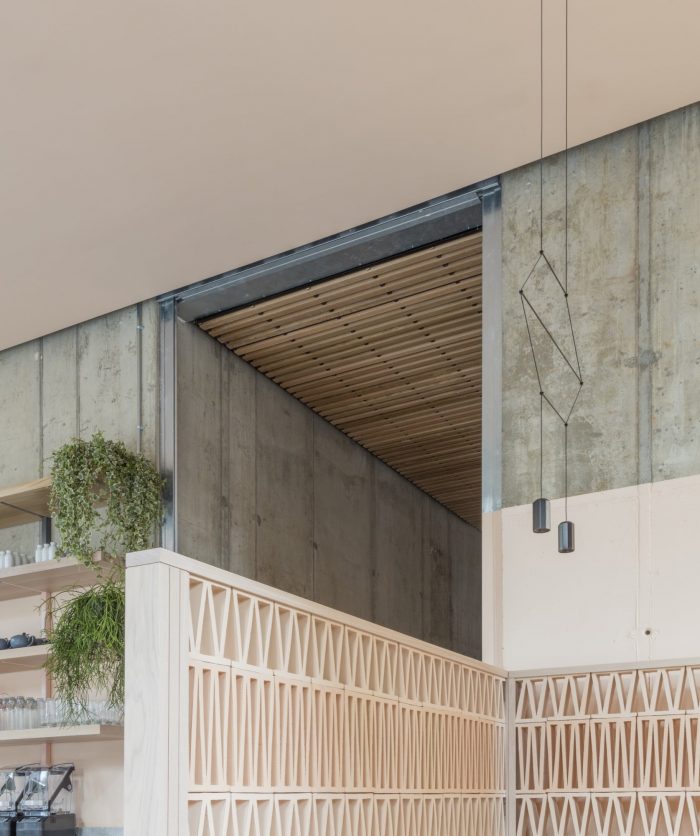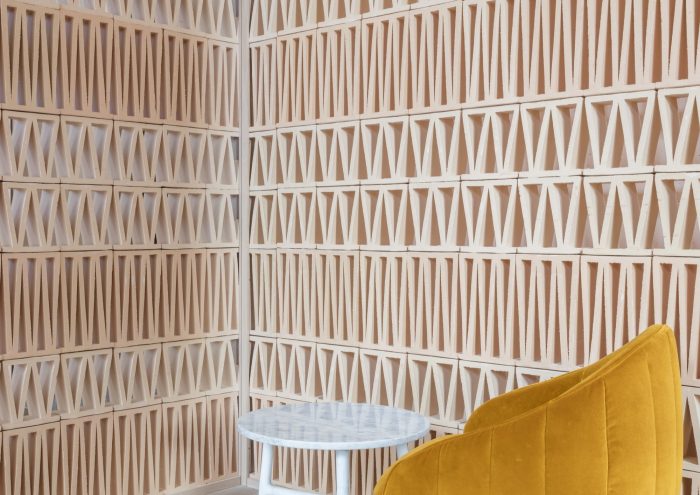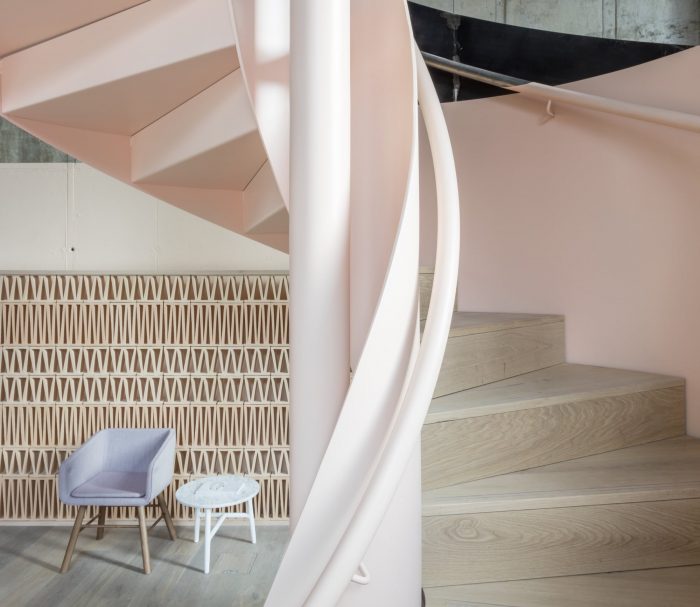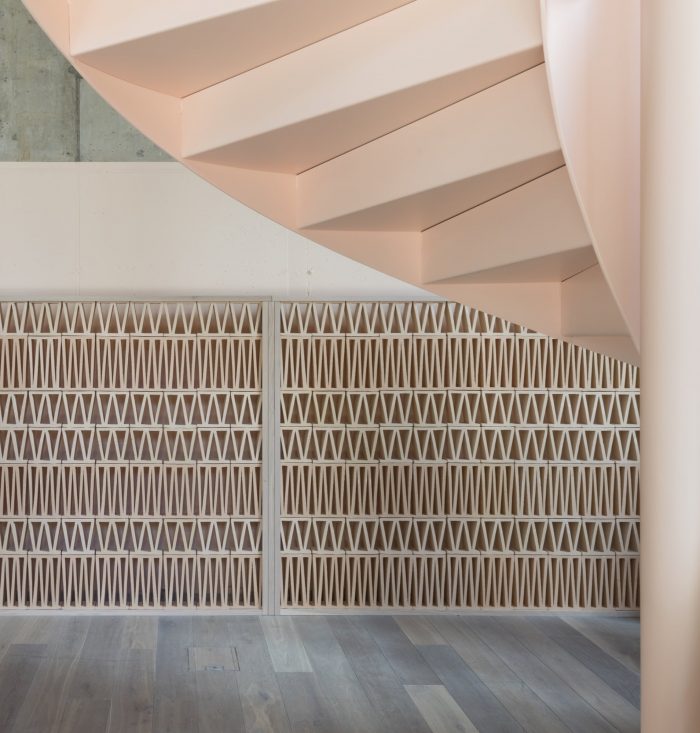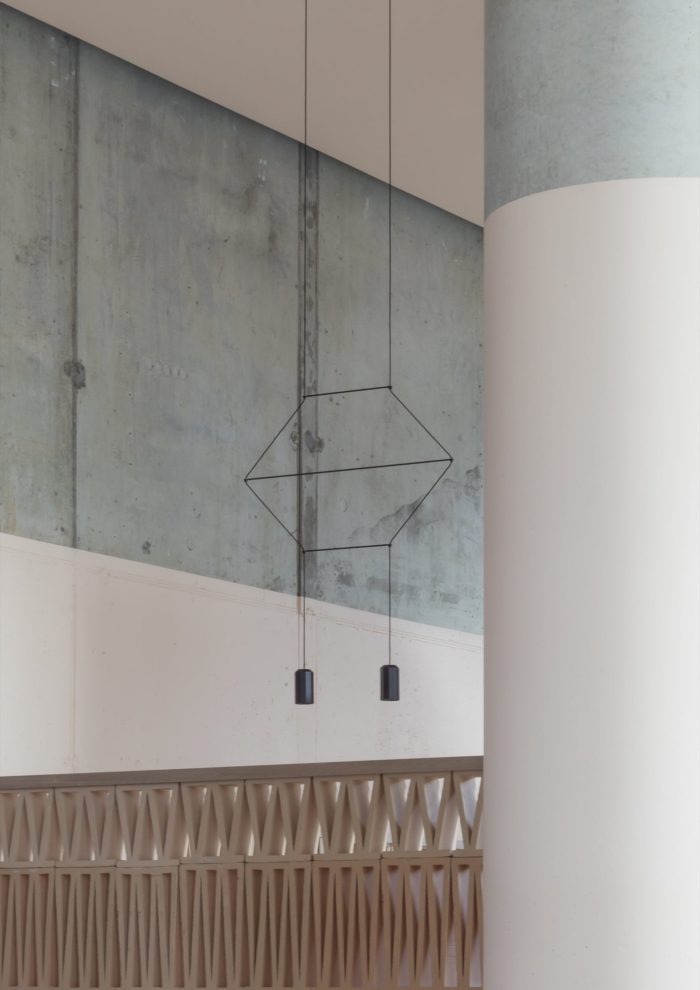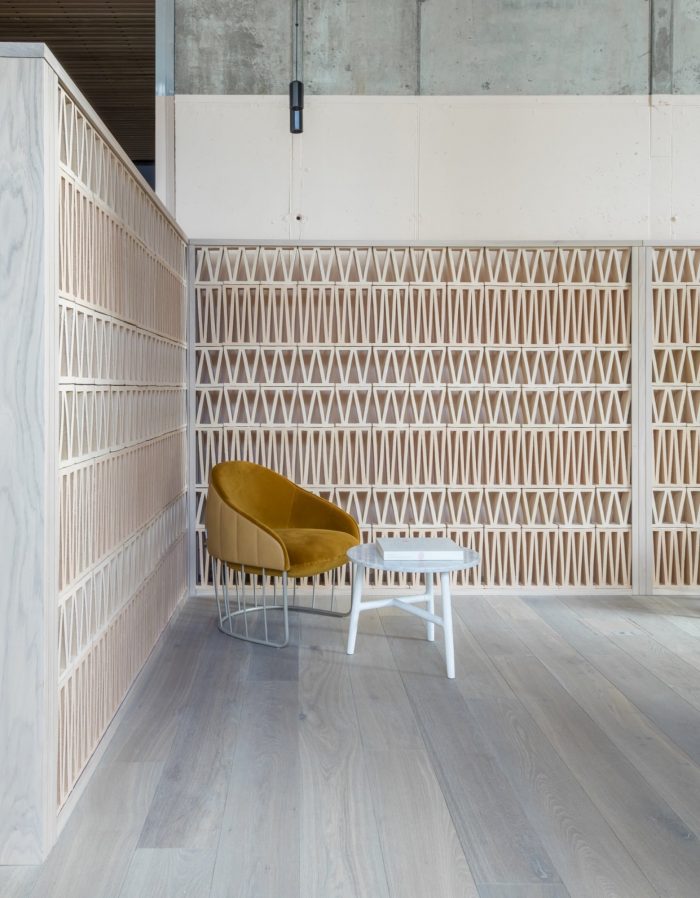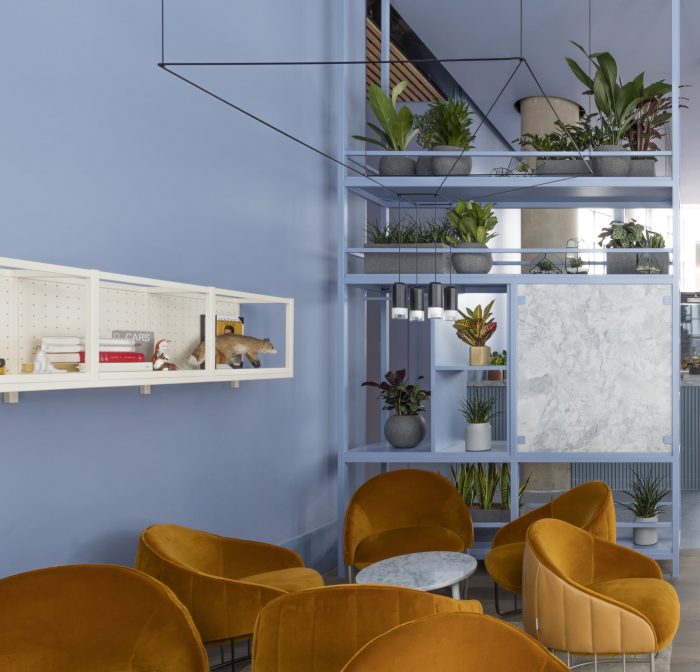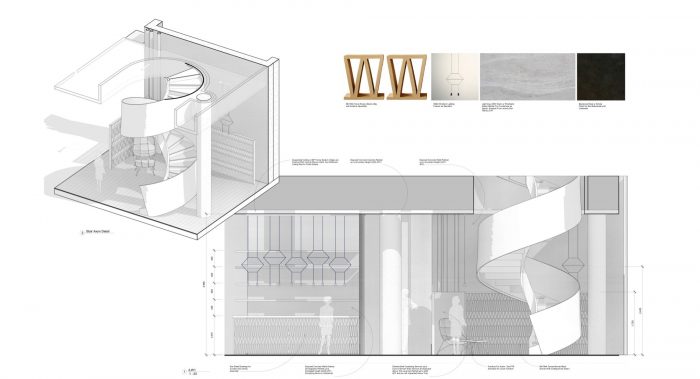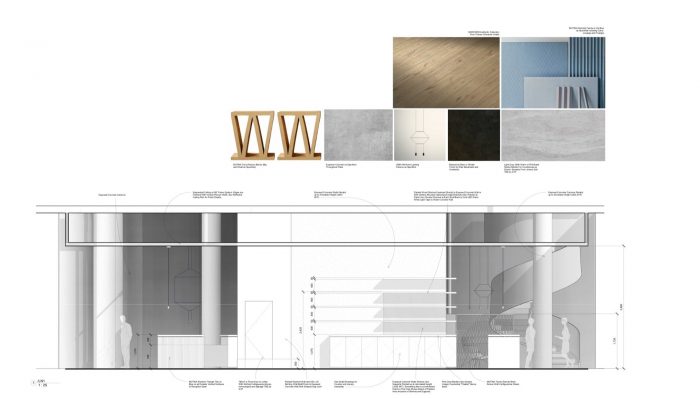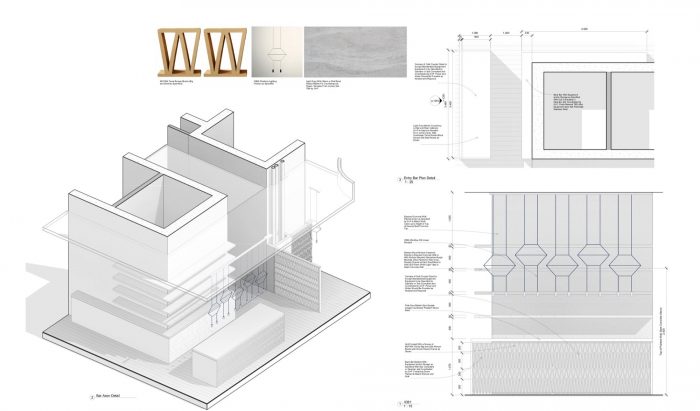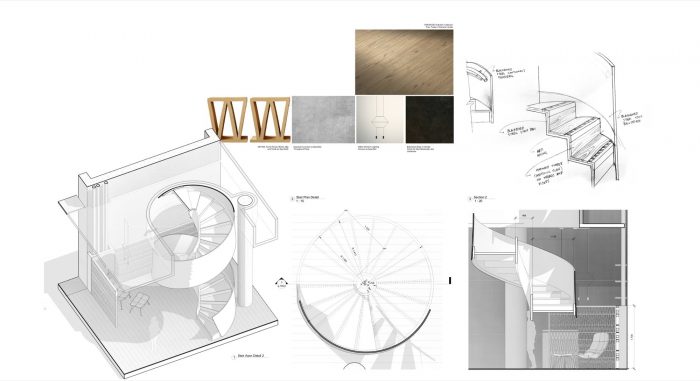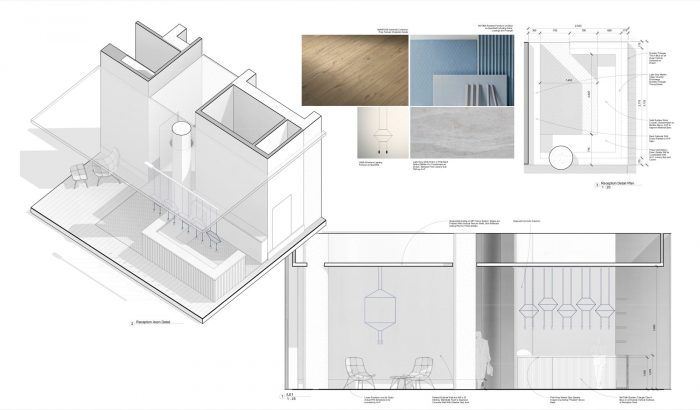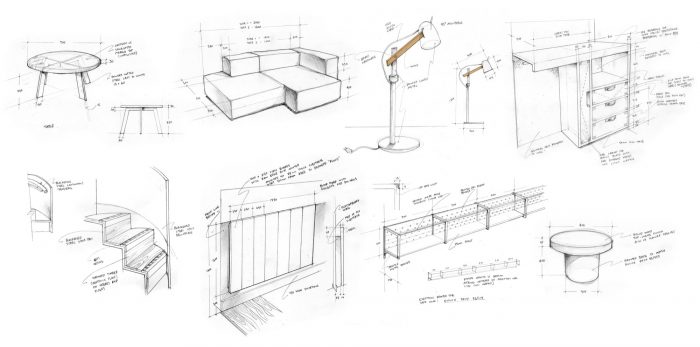Leman Locke是一个新的168个房间的酒店,我们在快速发展的伦敦东区Aldgate社区设计。这项委托让我们继续对酒店和住宅项目的交叉点进行了探讨。我们(和我们的客户)考虑到,年轻的、有创造力的专业人士,由于工作的原因越来越多地游走在世界各地,他们可能希望有一个选择,从酒店的角度将两个世界的优点结合起来。在优秀的精品酒店中经常可以看到以设计为主导的欢快气氛,同时又有长期住宿产品的便利。我们的过程是为了寻找一种方法,既能保持酒店住宿的兴奋感,又能享受到更类似于一个人在自己所居住的城市的家的优势,无论逗留时间长短。
Leman Locke is a new 168 room hotel that we designed in the rapidly evolving East London neighborhood of Aldgate. This commission allowed us to continue our interrogation of the intersection of hotel and residential programs. We (and our client) had in mind that young, creative professionals who are increasingly nomadic for purposes of their work might like to have an option that combines the best of two worlds from a hospitality perspective: The design-led and convivial atmosphere one often finds in good boutique hotels, mixed with the convenience of an extended stay product. Our process was driven by the search for a way to hold on to the aspirational excitement of a hotel stay while enjoying the advantages of something more akin to a home in one’s adoptive city no matter how long – or short – the stay.
我们还面临着一个额外的挑战,那就是该方案将建在一座新建的、相当冷清的塔楼内(不是我们设计的),所以我们不能依靠建筑来增强空间的特征。当我们工作时,框架和围护结构的建设仍在进行中,我们能够干预并对结构方面进行一些改变,而我们对内部的结构则持积极的态度。接待处和咖啡厅-酒吧空间被电梯厅分隔开,我们将它们设计成彼此不同,但在光线、温暖和质地的优先级上是一致的。我们还设计了一个几乎需要攀登的特色楼梯,以促进咖啡馆-酒吧-即将开业的餐厅空间(我们目前正在设计)之间的联系,该楼梯横跨一楼和二楼,从街道上看是可以分段的。
We faced an additional challenge in that the scheme was to be built within a newly constructed and rather sterile tower (that we did not design) so we couldn’t lean on the building to augment the character of the spaces. As the construction of the frame and envelope were still underway when we were working, we were able to intervene and make some changes to structural aspects that we were positively disposed to on the interior. The reception and the cafe-bar space are bifurcated by the lift lobby and we designed them to be distinct from one another yet congruent in their prioritization of light, warmth and texture. We also created a feature stair that almost demands to be climbed to foster the connection between the cafe-bar-forthcoming restaurant space (that we are currently designing) that spans the ground and first floors and is sectionally legible from the street.
我们设计了房间内几乎所有的家具,从沙发和床到一些灯具和桌子。这在很大程度上是出于创造一种独特而和谐的美学的愿望,但我们的另一个必要条件是功能的最大化和空间的经济性。我们希望避免目前很多微型住宅产品中明显的 “变压器 “气息,包括墨菲床、可伸缩的办公桌和翻转的桌子。虽然这种方法吸引了我们作为建筑师的 “发明家 “的一面,但我们希望让客人在吃完饭或准备睡觉的时候,不用再为清理和摆弄他们的家具而烦恼。我们的意图是消除潜在的不安感,这种不安感使我们在外出时灌输在家的感觉的自我指令变得复杂。
We designed nearly all of the furniture within the rooms, from the sofas and beds to some of the light fixtures and tables. Much of this was driven by the desire to create a unique and harmonious aesthetic, but our other imperative was maximization of function and economy of space. We wanted to avoid the “transformer” vibe apparent in a lot of current micro-residential products that include murphy beds, retractable desks and flip up tables. While that approach appeals to the “inventor” side of us as architects, we hoped to spare guests from the chore of clearing up and manipulating their furniture when finishing a meal or getting ready for bed. Our intention was to dispel the underlying sense of being unsettled which complicates our self imposed directive to inculcate the feeling of being at home while away.
产品说明。我们使用Viroc水泥粘合刨花板作为室内装修材料,用于墙面和一些墙角。它不仅非常坚固和实用,而且有助于将一些空间与一些我们选择暴露和庆祝混凝土上层建筑的地方联系起来。
Product Description. We used Viroc Cement Bonded Particle Board as an interior finish material both on the walls and some soffits. It is not only very robust and functional but helped tie in some of the spaces that were more finished with some of the areas where we chose to expose and celebrate the concrete superstructure.
Architects: Grzywinski+Pons
Area : 8600 m²
Year : 2016
Photographs :Nicholas Worley
Manufacturers : Vibia, Mutina, Amkel, Sancal, Viroc
City:London
Country: UNITED KINGDOM

